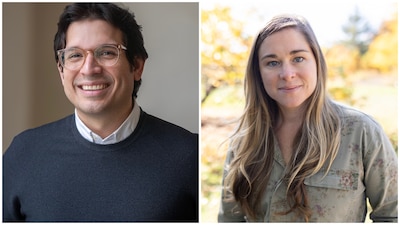The other night, our son Gabriel read “Mac and Tab” from cover to cover. He pointed to each word with confidence and pride. And recently, over breakfast, he showed off his understanding of place value, explaining his thinking with a grin as we asked follow-up questions.
By most definitions, he is “first-grade ready,” and he will indeed start first grade in September. But readiness is not just a skill set; it’s a state of mind. Today, he believes he is smart and that school is for him. That is the biggest change from the past year and a key reason why we made the decision to have him repeat kindergarten.
Gabriel was born in October 2018, making him one of the younger kids in his New York City public school kindergarten class in fall 2023. In many other parts of the country, he wouldn’t have started kindergarten until fall 2024. But New York City’s rigid age-based enrollment policy means that if your child turns 5 during the calendar year, they’re expected to start kindergarten that September. As a result, about a quarter of schoolchildren here begin kindergarten at age 4, and not all of them are ready for it.

As for Gabriel, we had some concerns going in — he’s a young, high-energy, bilingual boy — but we hoped that the dual-language program at our neighborhood school would support his transition. Instead, we found ourselves watching our exuberant son shrink before our eyes.
Just six weeks into the school year, we noticed changes. When we sat down to write thank-you notes after his fifth birthday party, Gabriel refused to write his name. “I can’t write unless it fits between the worm line and the airplane line,” he told us, referring to the “Fundations” handwriting guide used in his classroom. For months, he had been joyfully scribbling his name in oversized, freeform letters. Now he was afraid to get it wrong. Eventually, we learned he had stopped trying to write his name altogether.
At our first parent-teacher conference, we were presented with a report card filled with 1s and 2s, signifying that he was struggling to keep up.
“Identifies letters by name and sound – below grade level.”
“Uses knowledge of letters and sounds in writing – far below grade level.”
“Demonstrates understanding of spoken words and syllables – below grade level.”
His teachers complained about his need to play and move around. When I asked whether he was playing and moving enough during the day, the teacher assured me that 20 minutes of recess, gym class several times a week, and moving from class to class were sufficient. They also explained that there was simply no time, except on Friday afternoons, for unstructured play or “choice time,” given the district’s academic expectations and the amount of material they had to cover.
We were dismayed that his energy was misinterpreted as a behavior issue and that his desire to play was seen as inattentiveness. Most alarming was that despite the research on how literacy for bilingual children presents differently in the early years, his bilingualism seemed to be viewed as a delay.
Gabriel, who had been in formal school for just a few months, was already being identified as a struggling learner and characterized as hyperactive.
When the midyear report brought more of the same concerns, we suggested he repeat the year. Immediately, the teachers reversed course, assuring us that he would not need to repeat the year; he just needed more seat time and drilling on sight word flashcards.
We made the difficult decision to withdraw him from our neighborhood school at the end of the year. We transferred him to a new school that values play, movement, and meeting children where they are, and where he was ultimately permitted to repeat kindergarten. In that environment, Gabriel was given the gift of time to grow into a confident learner, and he has thrived.
To be sure, giving Gabriel an extra year to mature, develop fine motor skills, grow emotionally, and gain confidence is a privilege not afforded to most New York City students.
Some would call what we did “redshirting,” the controversial practice of delaying kindergarten for athletic or academic advantage. Others may argue that he is already at an advantage from having a mother with a Ph.D. in education and a father who is a kindergarten teacher with a master’s in bilingual education, and they would not be wrong. We knew what to look for, when to be alarmed, what questions to ask, what choices existed, and how to navigate the system.
But we didn’t hold him back to get him ahead of other children; we did it to stop the damage that developmentally inappropriate schooling was causing.
Just last month, The New York Times reported that offering an extra year of pre-K or transitional kindergarten to students, and to low-income Black and brown boys in particular, could help to close gender and opportunity gaps.
New York City public schools offer no such flexibility. Kindergarten starts based on your birth year, regardless of whether a child is emotionally, socially, or developmentally ready. Other school systems have responded to the research by offering more choice in when children start school and how quickly they progress. In 2010, California passed the Kindergarten Readiness Act, which makes kids whose birthdays fall between September and December eligible for a publicly funded transitional kindergarten, or TK, year before starting traditional kindergarten.
As a city and state, we need to do more to ensure we are meeting children’s academic and social needs in the early years of school. If kindergarten has become the new first grade, with early academic benchmarks, then we need to ensure it’s also a space where a child’s individual development is respected. For many children, an additional year of pre-K or transitional kindergarten would be the most appropriate option.
I want parents to know that even in New York City today, they have options. You can ask to repeat kindergarten. You can advocate for your child. And sometimes, you can change schools in order to make another year of kindergarten possible.
I’d like to see the city’s next mayor encourage its public schools to create a transitional kindergarten program that gives families more flexibility to decide, in conversation with educators, the best time for their child to start first grade.
New York State policymakers also need to recognize that age alone isn’t a sufficient measure of readiness and that younger children, especially boys and multilingual learners, often need more time to grow into school. A transitional year can offer that time without stigma, giving children space to develop their confidence, language, and love of learning.
Our experience with Gabriel has shown how much of a difference the right environment and an extra year can make. Families shouldn’t have to fight for that chance. Giving every child the time they need isn’t just good practice; it’s an equity issue, and it’s time New York City caught up.
Chandler Patton Miranda earned her Ph.D. in Educational Leadership at New York University and is an Assistant Professor of Education at Molloy University. She is a former high school science teacher.
Luis Miranda earned a Master of Science in Education with a specialization in dual language and bilingual education at Bank Street Graduate School of Education and teaches kindergarten at the Collegiate School in Manhattan.


